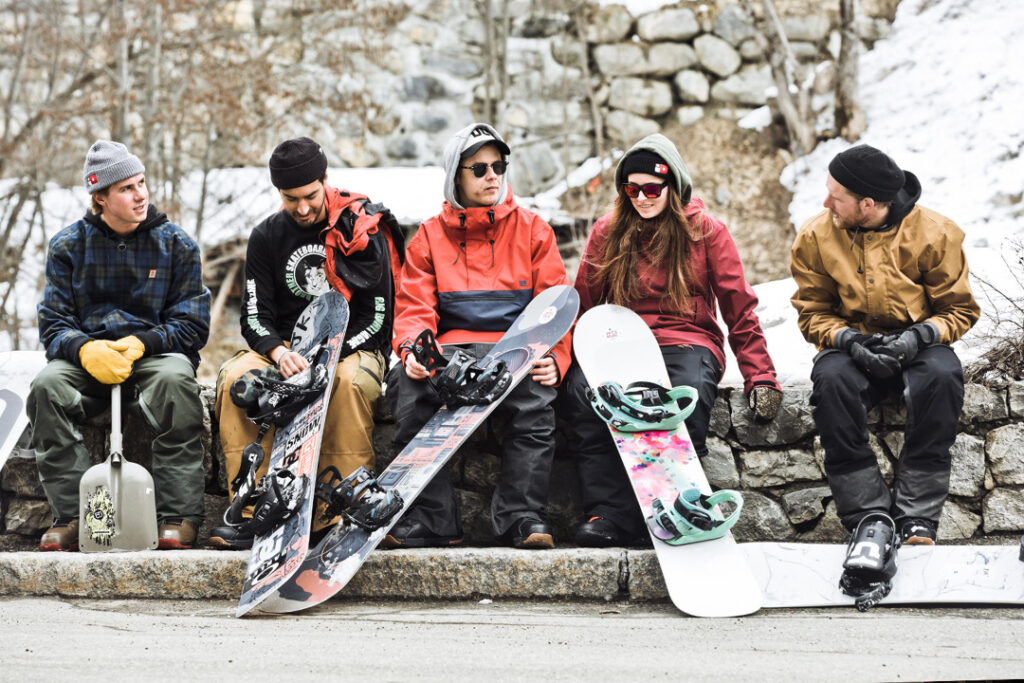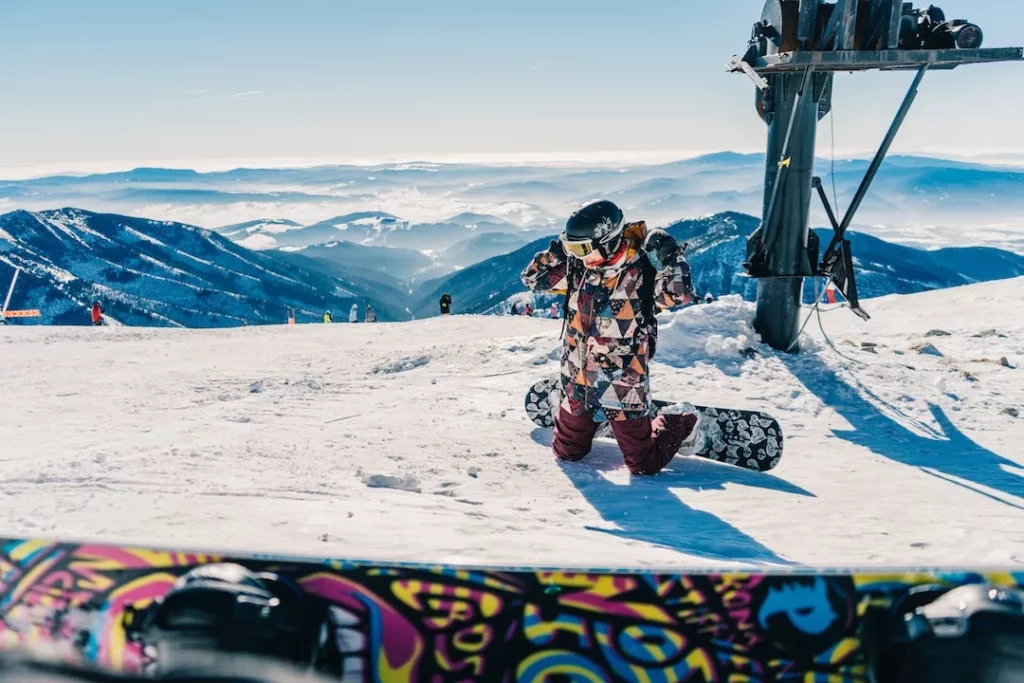Actionhorse Films
A Deep Dive into Actionhorse Films and Their Snowboarding Spectacle
Actionhorse Films’ 2008 offering, “Pony Tail,” stands as a compelling testament to the vibrant and often boundary-pushing world of independent snowboarding cinema. Immediately setting itself apart by being available for free download in high definition, as noted by resources like Snowboarding Films Database and Lib Tech’s blog, the film hints at a production ethos that prioritizes sharing the thrill of the sport with a wide audience, potentially valuing community engagement over immediate commercial success. This act of accessibility, especially in the nascent stages of online video distribution, suggests a studio with a finger firmly on the pulse of snowboarding culture, understanding the desire for shared experiences and the power of grassroots dissemination. Actionhorse Films, though perhaps not a household name in mainstream cinema, has carved a unique niche within the snowboarding landscape, and “Pony Tail” serves as an intriguing lens through which to examine their contributions.
The Origins of Actionhorse Films
Delving into the origins of Actionhorse Films reveals a likely connection to the Scandinavian snowboarding scene, with Per-Hampus Stålhandske identified as a key figure who produced a series under the Actionhorse banner. Stålhandske’s involvement in Nike Snowboarding’s “Never Not” project further underscores his established presence within the industry, indicating a level of respect and recognition that likely extended to his independent endeavors. This European connection and Stålhandske’s prior experience suggest a foundation built upon existing networks and a deep understanding of the snowboarding film production process. The name “Actionhorse” itself conjures images of dynamic movement and untamed energy, perfectly aligning with the high-octane nature of snowboarding. This choice of name could reflect a deliberate intention to capture the raw athleticism and excitement of the sport, perhaps in contrast to more commercially driven productions that might dilute the core essence of riding with excessive branding or lifestyle narratives. The studio’s genesis, therefore, appears rooted in a passion for snowboarding and a desire to showcase its unbridled spirit through film.
The Role of Hampus Mosesson in ‘Pony Tail’
At the heart of Actionhorse Films and “Pony Tail” is undoubtedly Hampus Mosesson, consistently mentioned as a featured snowboarder and the driving force behind the film. Mosesson’s role likely extended beyond just riding; he was likely instrumental in the film’s direction and production, leveraging his established career as a professional snowboarder to bring “Pony Tail” to fruition. His Swedish background further contextualizes the film’s strong representation of Nordic snowboarding talent. Alongside Mosesson, “Pony Tail” boasted an impressive lineup of prominent Nordic riders, including Austin Smith, Eero Ettala, and the highly acclaimed Halldor Helgason. Featuring such a talented roster would have undoubtedly amplified the film’s appeal within the snowboarding community, drawing in fans eager to witness the skills of these athletes. While interviews with riders like Helldor Helgason and Austin Smith in the provided snippets don’t directly discuss “Pony Tail,” their insights into the world of professional snowboarding and filmmaking offer a valuable context for understanding the likely ethos and style of Actionhorse Films. These riders, deeply embedded in the culture and constantly pushing the limits of the sport, would have brought an authentic and progressive energy to the project.

The Film’s Approach: Skill Over Narrative
“Pony Tail,” released in 2008, appears to eschew a complex, overarching narrative in favor of showcasing the pinnacle of snowboarding skill and progression. The film is particularly noted for featuring Halldor Helgason’s groundbreaking tow-in backflip up a set of steps, a trick so remarkable that Snowboarding Films Database declared it a must-see. This emphasis on capturing and celebrating such innovative moments is a hallmark of many core snowboarding films, which often prioritize inspiring viewers with the sheer athleticism and creativity of the sport. In this regard, “Pony Tail” aligns with a documentary-style approach, where the professional snowboarders are the central figures, performing their craft rather than acting out a fictional story. This focus on authenticity resonates deeply within the snowboarding community, which often values genuine riding over contrived narratives. While other films with “Pony” or “Ponytail” in their titles exist, spanning genres from comedy to romance, Actionhorse Films’ “Pony Tail” distinguishes itself by its dedication to showcasing high-caliber snowboarding and the talent of its riders.
Cinematography and Visual Style
The cinematography in “Pony Tail” likely employed a range of techniques common in snowboarding films, aiming to capture the dynamism and visual excitement of the sport. This would have included wide shots to establish the stunning mountain environments, close-ups to highlight the riders’ skill and intensity, and follow-cam shots to immerse the viewer in the action. Given the film’s release in 2008 and its availability in high definition, it likely benefited from advancements in camera technology, allowing for clear and detailed capture of the snowboarding. The visual style of Actionhorse Films, being an independent production, might have leaned towards a raw and unfiltered aesthetic, celebrating the natural beauty of the snowboarding locations and the unadulterated thrill of the ride. While perhaps lacking the extensive budgets of larger productions, the focus on core snowboarding and the use of HD technology would have resulted in a visually compelling film for its target audience.

Critical Reception and Legacy
Critical reception for “Pony Tail” appears to have been largely positive within the snowboarding community. Zapiks, an action sports platform, hailed the film as “amazing” and among their favorites of the year, specifically praising its high definition quality and the exceptional talent of the Nordic riders, with Hampus Mosesson receiving particular mention. This enthusiastic reception from a specialized media outlet indicates that the film successfully connected with its core audience. However, as is typical for niche genre films like snowboarding movies, “Pony Tail” likely did not garner significant attention from mainstream film critics or publications. The focus on a specific sport and community often means that these films find their primary audience and appreciation within that realm. The positive reception within the snowboarding world, contrasted with the more mixed reviews sometimes seen for narrative-driven snowboarding films, suggests that “Pony Tail’s” emphasis on authentic riding and progression resonated strongly with its intended viewers.
Conclusion: ‘Pony Tail’ and Its Place in Snowboarding History
“Pony Tail” evidently found a receptive and appreciative audience within the snowboarding community. Its availability as a free, high-definition download likely played a significant role in its widespread reach and popularity. The film’s reputation for showcasing groundbreaking snowboarding, particularly Halldor Helgason’s remarkable trick, would have generated considerable buzz and cemented its status as a must-watch among snowboarders. Mentions on platforms like Lib Tech’s blog further attest to its positive reception and visibility within the industry. While not explicitly discussed in the provided snippets, it is plausible that “Pony Tail” achieved a level of cult classic status within the snowboarding community, remembered fondly for its showcase of influential riders and progressive snowboarding from that era. Its presence in resources like Snowboarding Films Database confirms its ongoing recognition and relevance within the specialized media of the sport.
In conclusion, Actionhorse Films’ “Pony Tail” emerges as a significant entry in the snowboarding film landscape of the late 2000s. Likely spearheaded by the passionate vision of Hampus Mosesson and featuring a stellar cast of Nordic riders, the film prioritized showcasing high-caliber snowboarding and pushing the boundaries of what was possible on a board. Its independent spirit, reflected in its free and high-definition online release, resonated strongly within the snowboarding community, earning positive reviews and likely achieving a lasting legacy as a film that captured a pivotal moment in the sport’s progression. While perhaps not widely recognized by mainstream critics, “Pony Tail’s” impact on the snowboarding world is undeniable, serving as a testament to the power of independent filmmaking to celebrate and elevate niche sports and their dedicated communities.
